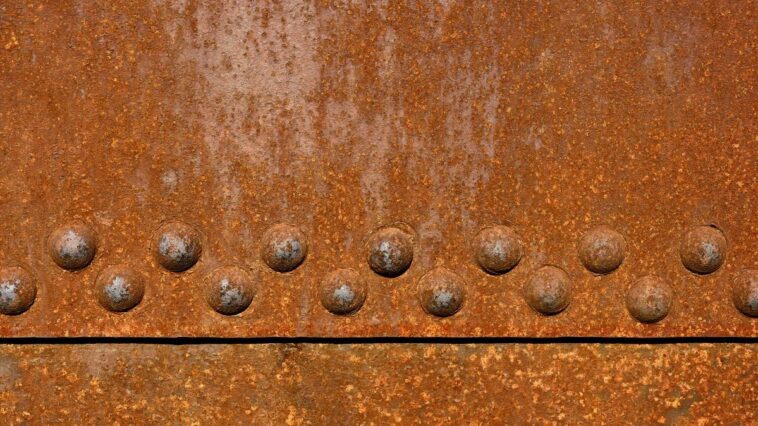In the recycling world, the condition of your products is often a crucial factor in determining its recycling market. Wet paper and broken glass are examples of tarnished products that will usually be turned away by recyclers.
But what about rusted scrap metal? If you’re trying to recycle metal furniture or car parts that have been left outside, they are likely covered in rust. Let’s get to the bottom of the impact of rust on scrap metal.
What Is Rust?
Rust occurs when iron reacts with oxygen from water or moisture to produce iron oxide. It’s actually a combustion reaction, minus the flames you would get with a fire.
Rust will appear as a reddish-brown color on the surface of metals and is rough to the touch. For metal that rusts under water, such as bridge pillars, it will instead appear green because of a reaction with chloride.
Because rust requires iron, it will only occur in metals that contain iron, such as steel. No matter how long you leave an aluminum can in water, it won’t rust. Because steel is the primary metal in engineering and manufacturing, you’ll find it in many places around the house and in your yard. These include furniture, auto parts, nails and screws, and tin cans.
Rust can be removed from metal using household products like lemon juice, baking soda, vinegar, and steel wool, or you can purchase chemicals to remove it. You can also coat metals ahead of time to prevent rusting.
If rust is left untreated, it can corrode through all the metal in your products and create holes, which will weaken the strength of these products. You probably wouldn’t want to sit in a chair or ride a bike with holes in the frame.
Rust and Recycling
When iron is first extracted from the earth, it is in an oxidized form known as ore. The smelting process involves breaking any bonds created by oxygen and iron so it can be refined into metals like steel. To recycle rusted metal, you need to remove the oxygen again.
In the recycling process for steel, the material is shredded and then melted to create new sheets of metal. If the rust is simply melted, it will re-form once the metal cools. That’s why the recycling process also includes purification, where elements like carbon can be added to bond with the oxygen and free the iron. This also removes other impurities like ink or dried paint.
However, just because rust can be removed during recycling, there are still a few factors that may affect the market for rusted steel:
- Most scrap metal yards will pay you by weight, and metal with severe rust damage will weigh less.
- Scrap metal accepted for recycling must be a majority made of metal, so if your product is half-metal and half-plastic and the metal corrodes away, it likely won’t be accepted as scrap metal.
Tips for Recycling Rusted Metal
If you’re cleaning out a garage or shed filled with metal, you’ll likely find plenty of metal products to recycle. Here are a few tips to consider:
- Coat any metals that are outside (e.g., fences, lawn furniture) to prevent rust in the first place.
- For reusable products (such as bicycles) with surface rust, use a natural process to remove the rust and donate the product to a secondhand store or charity.
- If you have products with rust holes or other major rust damage, call a scrap recycler to confirm whether or not the product is recyclable before transporting it or arranging pickup.
Editor’s Note: This article was originally published on December 4, 2017, and updated in December 2024.




GIPHY App Key not set. Please check settings